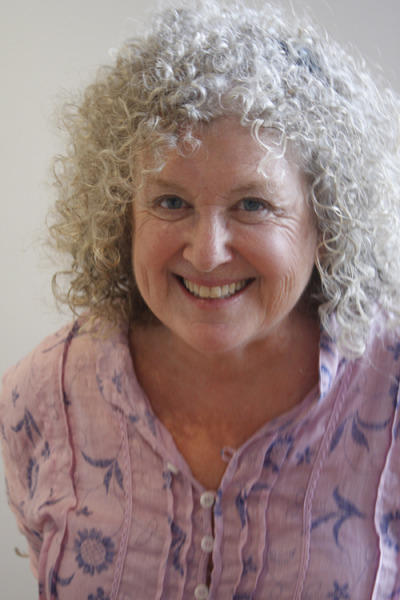Beyond Verbal Language: Communication as a Means of Connection
How Speech and Movement Therapist Heidi Ehrenreich Unravels the Mysteries of “Mystery Kids”
by Sarah Werthan Buttenwieser
 photo: www.cgindy.com
photo: www.cgindy.com
Heidi Ehrenreich has worked with children for decades. Her expertise includes dance and movement therapy, as well as speech pathology. No surprise then that her therapeutic work centers around communication. She has worked most especially with kids “on the spectrum,” although she began to do so before many of today’s diagnoses became commonplace. When she developed her interest in working with children, she envisioned kids whose struggles had to do with communication as “mystery kids.” Despite her clinical training in speech, the focus of her work isn’t necessarily or solely language-focused. She begins with this premise: over 90% of our communication occurs without words. I interviewed Heidi to better understand her perspective on children, communication—and the underlying reason we work so hard to communicate with one another: connection.
Sarah Werthan Buttenwieser: If so much of how we communicate isn’t through words, can you explain what it is we’re doing with one another instead?
Heidi Ehrenreich: We communicate in partnership with another person or people in a conversation with a shared intention to connect. That’s our intention, the connection. We don’t care solely about the words.
It’s not that words are unimportant. Words are important. But on their own, they can fall flat. What we rely upon to convey meaning and to connect with one another includes body language, the speed and intonation of our words, and gesture. If a child doesn’t notice intonation, then she or he won’t really “get” the message. For kids on the spectrum, this is an issue; they miss the meaning, the paralinguistic or right brain not-worded parts of the message. If you can’t catch all the not-worded stuff, it’s much, much harder to understand meaning.
SWB: Break it down for me a little more. What are some ways we communicate without words?
HE: We often enter another person’s world without words. Think about babies. It’s early parenting stuff, things that if you do them, you do them so naturally you don’t realize what it is you’re doing and so it’s hard to teach. I’m talking about things like the way a baby raises her eyes and her mom raises her eyes back. Without conscious thought, her mom is building upon these moments that connect us. With babies, we mimic sounds. We smile back. This gets us another smile. And we smile back. We get one more. On we go like that, communicating.
In dance therapy, we call this attunement, or affective attunement. We also talk about mirroring; that’s the action. The reason we do this is to let the other person know we’re with them.
 Heidi EhrenreichSWB: Does the speech therapy work differ greatly from the dance and movement therapy work for you, or are the different disciplines similar?
Heidi EhrenreichSWB: Does the speech therapy work differ greatly from the dance and movement therapy work for you, or are the different disciplines similar?
HE: I don’t find them so different from one another, not really. I believe in using all modalities—language and music and movement.
SWB: For someone who doesn’t notice intonation, or facial expressions, what happens?
HE: If a child doesn’t notice intonation, she or he won’t get those messages. What happens to children on the spectrum is they often hear words, yet miss the meaning. Quite literally, they hear the words. Functionally, it’s as if they can’t really hear them.
SWB: This would make social interaction especially difficult.
HE: Yes, exactly. Before we had words for kids on the spectrum, back when I was growing up, I’d come home from school and “do school,” which was to act out what happened that day. I’d do impressions of the mystery kids, not in order to mock anyone—that’s bullying—but to figure them out. I was striving to attune or connect, and so I’d attempt to inhabit as a way to understand them better. Those kids really liked me and I was very popular, so I’d take a kid who was being bullied under my wing and help to translate. I was, in retrospect, an ambassador.
In a sense, that’s the role I fill now, ambassador. I’ve worked to connect kids within the school community, joining with teachers to foster better understanding of their students. I might work with a teacher to change the classroom environment to meet a child’s needs better. So many accommodations are simple. Visuals can serve as important anchors. In a classroom or at home, it may be that a symbol or photo to identify what things are or what you do in different places, really just little reminders, helps. The bigger goal is to take some of the burden off the child to adjust or conform and instead to make the environment meet the child’s needs better.
SWB: Do schools do this?
HE: Some do. But not all—and it’s very frustrating for parents to have to advocate so hard for their child. Being advocates often requires a great deal of time—all of their time. Therapies and treatments and private schools are expensive.
The work is the same with families; I help parents to learn to partner with their kids, so that they can connect. I find the best way to work with families is to go into their homes.
SWB: Why’s that?
HE: You get to see the family in action. What I’m really trying to do with parents is help them see where they are connecting with their child and to encourage more of those interactions.
What happens when kids are diagnosed is that children and parents receive a series of things to do, prescriptions of therapies and exercises and whatever else. I often see parents so busy trying to do everything “right” that they are constantly vigilant and “on duty.” It’s an exhausting way to be a parent, but it’s understandable, too, because parenting a child with special needs is very hard. I want to support communication becoming easier for parent and child. It’s hard in the midst of all those “shoulds.” In the middle of a session, one parent just held her child in the kitchen for a moment. They leaned into one another. It was the most joined I’d seen her with her child, looking in the fridge for a snack. I said to her, “More of that, right there, just feeling physically connected to your child, with him. Let yourself have that.” She was always so busy doing to or for her child she had lost the ability to be truly present. She’d gotten so far into the mode of “working with” her child, she lost the ability to simply be with her child. She needed permission to connect.
SWB: What are some ways to change from some version of there being something “wrong” with a child to a more accepting and encouraging perspective?
HE: Rather than look for what’s wrong, look at what is. How does this child learn best? Are there ways to make the environment more comfortable and user-friendly? What’s difficult for this child?
This tangibility can apply to activities, processes, too: you help negotiate things so they become recognizable and ultimately familiar. Take a play date for example: the two kids may disagree about which activity they’d like to do. So, you might write three choices down. You’d say, “Well, your friend wants to do a puzzle and you want to draw. It would also be nice to go outside, since it’s a pretty day.” You make a list of those three things. You say, “Let’s draw for ten minutes before we do a puzzle for another ten minutes and then we’ll go outside.” You are making things simpler and you’re putting boundaries around each aspect of the play date, including how long each activity will last. This is how a child learns to engage, how to come into a circle of communication. You break down the steps. Then, you practice.
 Sarah Werthan Buttenwieser is a graduate of Hampshire College and the MFA for Writers Program at Warren Wilson College. Along with a personal blog Standing in the Shadows, she writes for such publications as Babble, Huffington Post, Brain Child magazine, Literary Mama, and Preview Massachusetts magazine. As a writer and mama to four, she is pretty constantly busy.http://standshadows.tumblr.com/
Sarah Werthan Buttenwieser is a graduate of Hampshire College and the MFA for Writers Program at Warren Wilson College. Along with a personal blog Standing in the Shadows, she writes for such publications as Babble, Huffington Post, Brain Child magazine, Literary Mama, and Preview Massachusetts magazine. As a writer and mama to four, she is pretty constantly busy.http://standshadows.tumblr.com/



 2 Comments
2 Comments
Reader Comments (2)